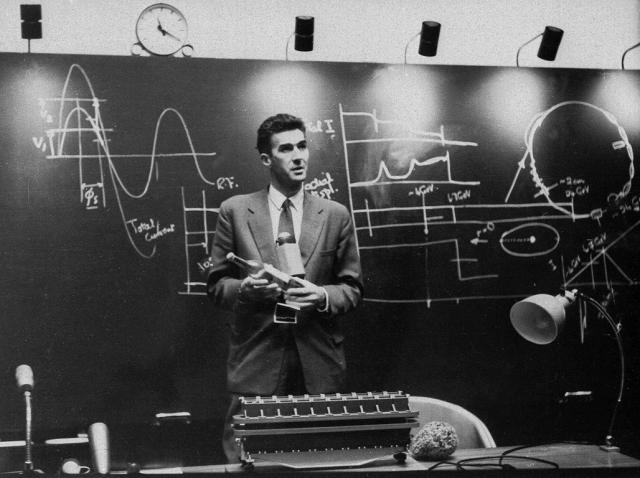The Proton Synchrotron starts up

The Proton Synchrotron (PS) accelerated protons for the first time on 24 November 1959, becoming for a brief period the world’s highest energy particle accelerator. With a beam energy of 28 GeV, the PS became host to CERN’s particle physics programme, and provides beams for experiments to this day.
During the night of 24 November 1959 the PS reached its full energy. The next morning John Adams (pictured) announced the achievement in the main auditorium. In his hand is an empty vodka bottle, which he had received from Dubna with the message that it was to be drunk when CERN passed the Russian Synchrophasotron’s world-record energy of 10 GeV. The bottle contains a polaroid photograph of the 24 GeV pulse ready to be sent back to Dubna.
When CERN built new accelerators in the 1970s, the PS’s principle role became to supply particles to the new machines. Since the PS started up in 1959, the intensity of its proton beam has increased a thousandfold, and the machine has become the world’s most versatile particle juggler.
In the course of its history the PS has accelerated many different kinds of particles, feeding them to more powerful accelerators or directly to experiments.